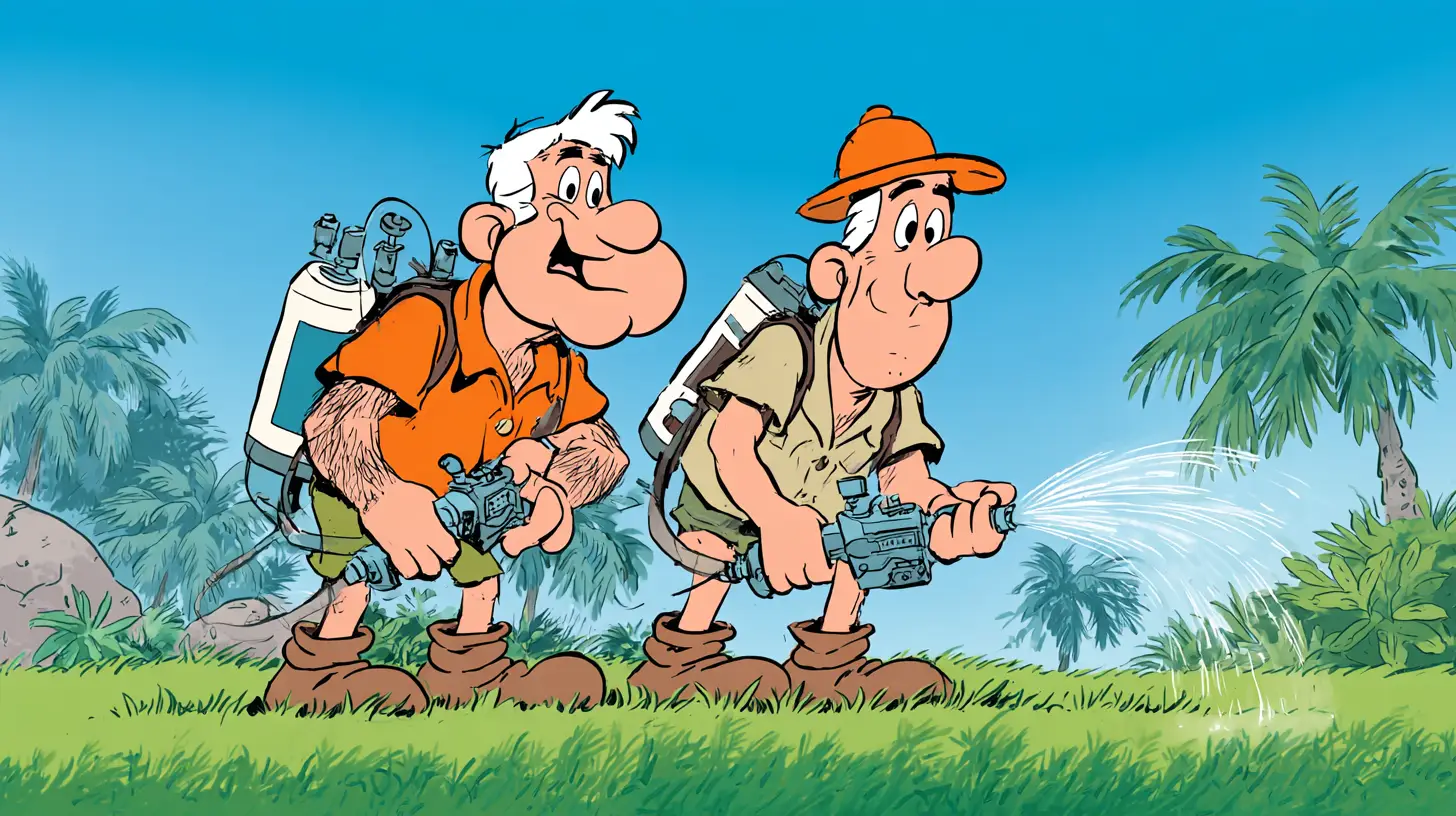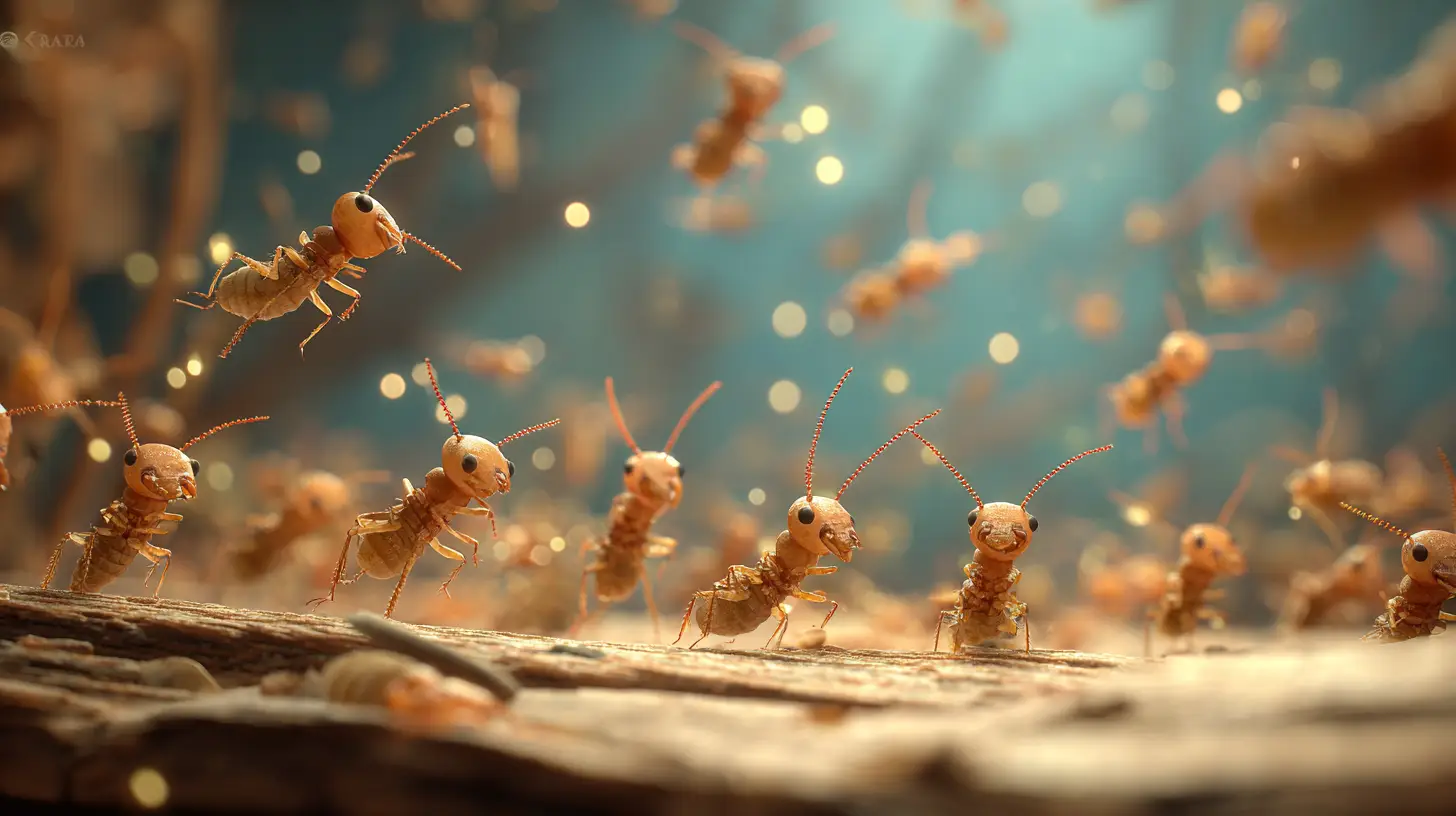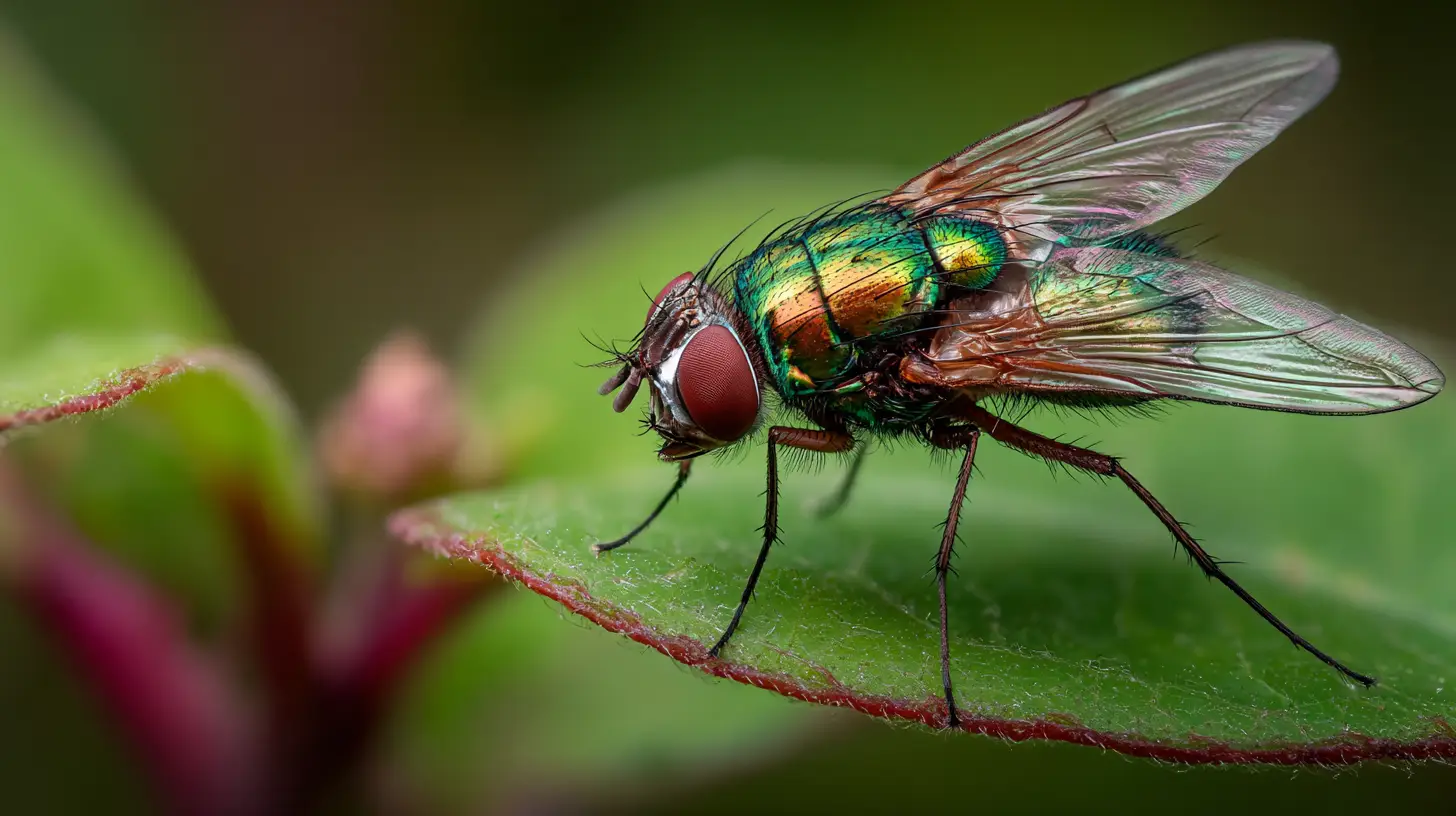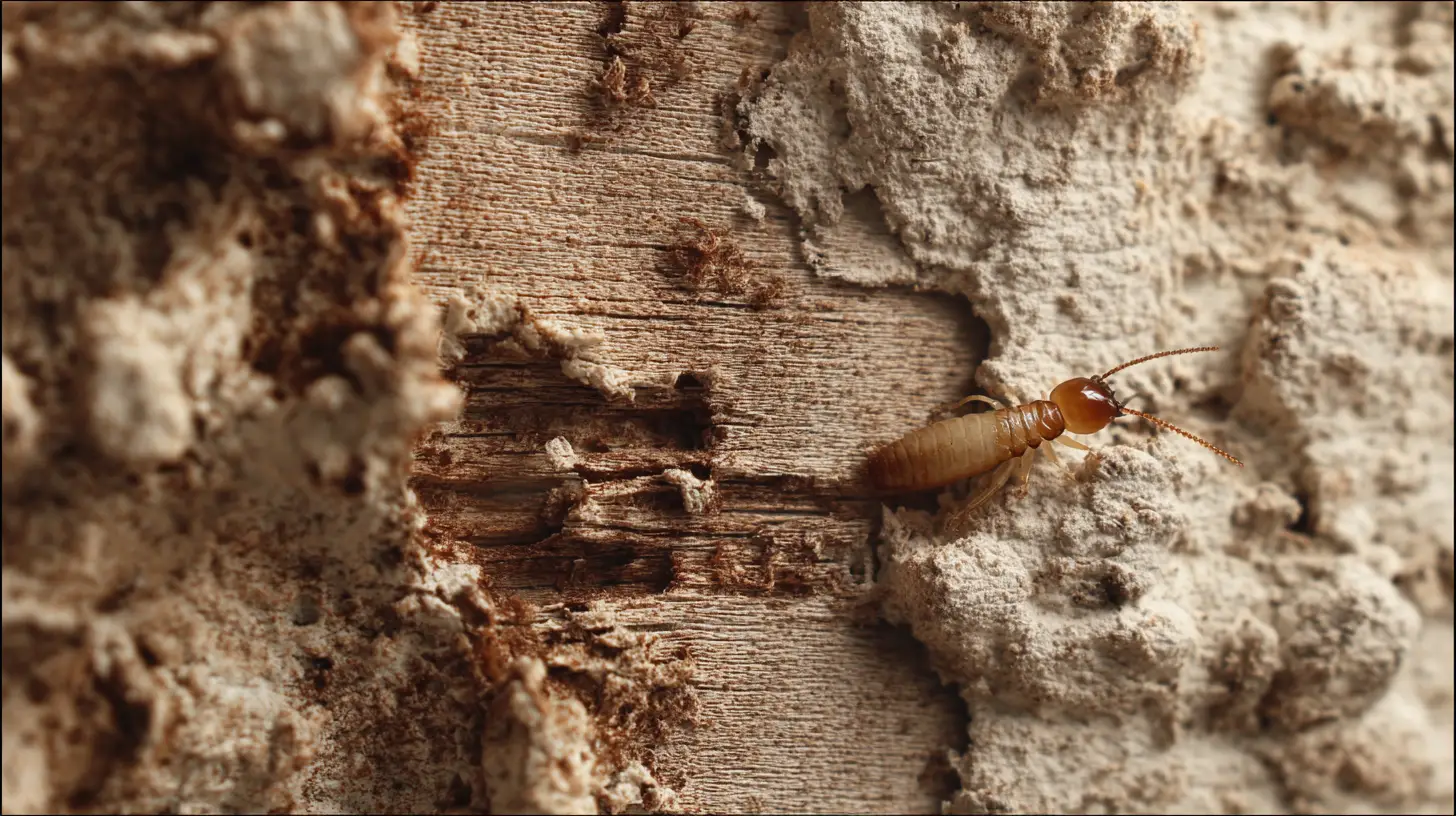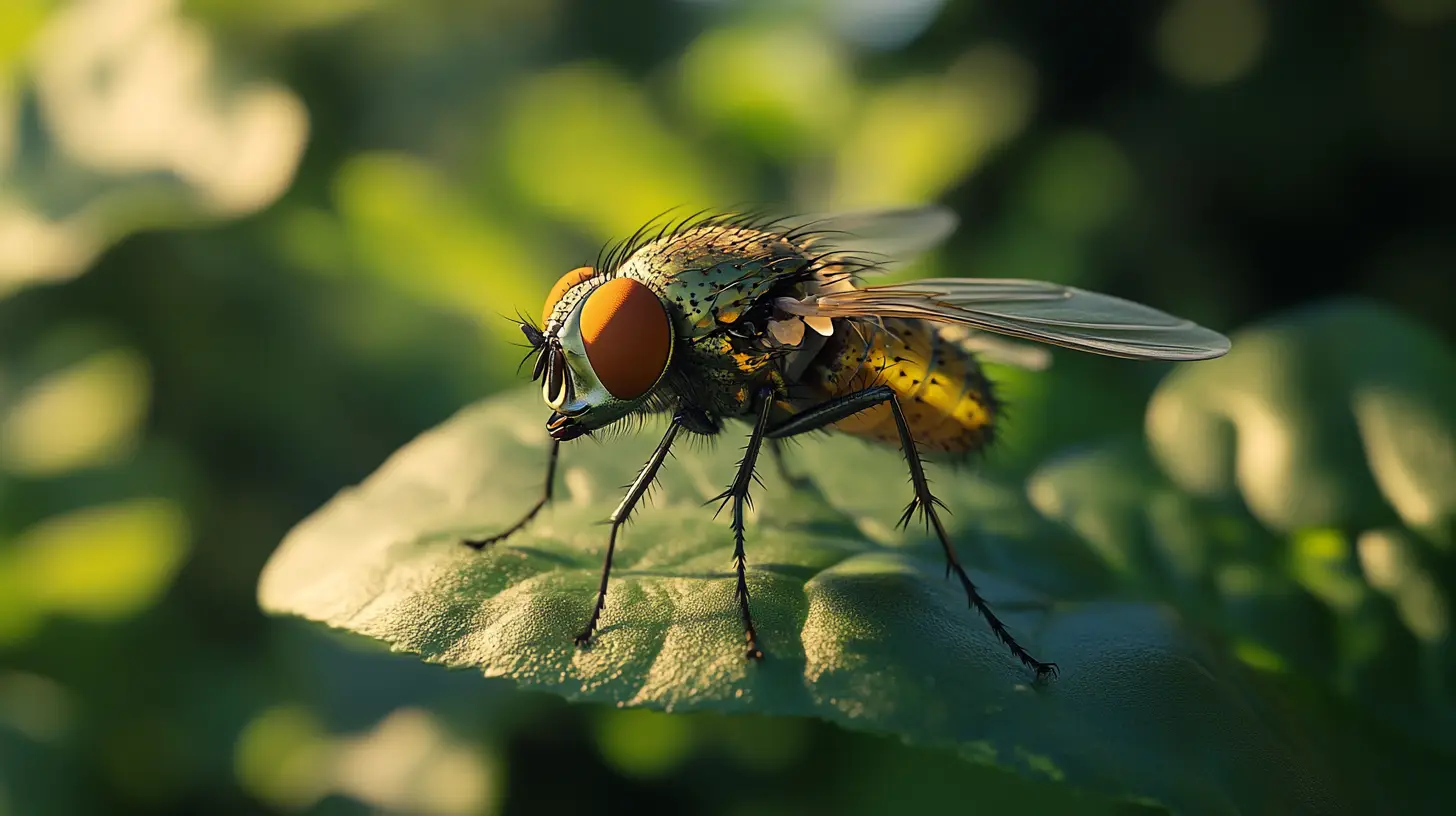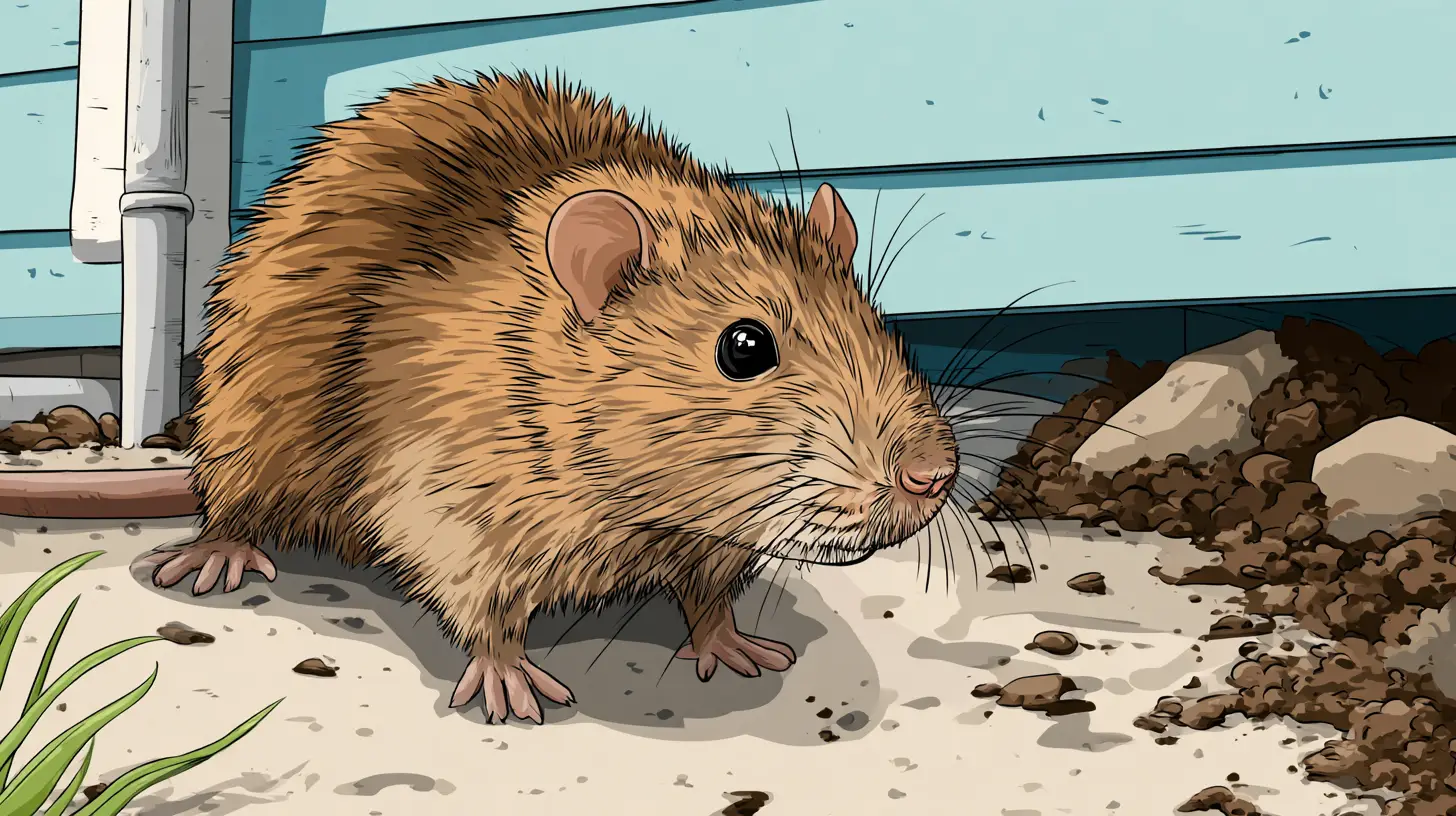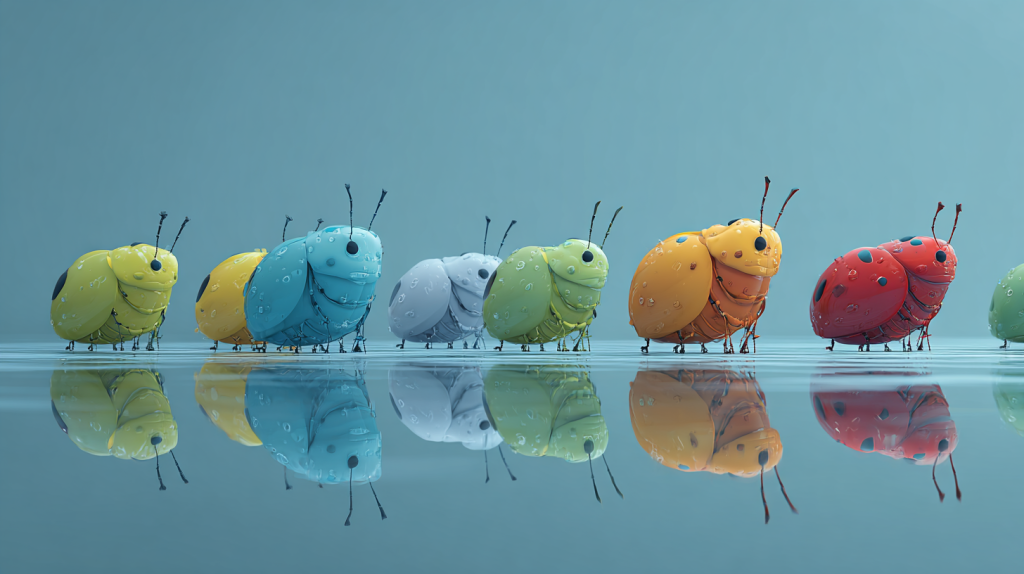
Table of Contents
If you’ve lived in Bradenton for any length of time, you know that our beautiful Gulf Coast location comes with a not-so-beautiful reality: bugs. Lots of them. Year-round. From love bugs splattering your car to mosquitoes turning evening barbecues into tactical missions, dealing with pests is just part of life here.
But what if I told you that something as simple as your paint color choices could help reduce the number of uninvited six-legged guests around your home? It sounds almost too good to be true, but research suggests that certain pest repellent colors can actually influence insect behavior and make your Bradenton home less attractive to various pests.
Now, before you get excited and think you can paint your way to a pest-free paradise, let’s be clear: pest repellent colors aren’t a magic solution. They won’t eliminate your bug problems entirely, and they definitely won’t replace professional pest control for serious infestations. But when combined with other pest management strategies, the right color choices can be another tool in your arsenal against Bradenton’s persistent pest population.
So which pest repellent colors actually work, and how can you use them strategically around your Bradenton home? Let’s dive into the science behind color and pest behavior, and explore practical ways to incorporate these findings into your home’s design.
Key Takeaways
- Choose colors based on target pests – blue for wasps and bees, green for general insects, yellow and orange for flies and mosquitoes.
- Focus on outdoor areas where pest repellent colors can make the most noticeable difference in comfort and usability.
- Combine with other methods for maximum effectiveness – color alone won’t eliminate pest problems in Bradenton’s challenging environment.
- Start with small applications like trim, furniture, or accent colors before committing to major color changes.
- Consider local factors including HOA restrictions, architectural style, and specific pest pressures in your area.
- Maintain realistic expectations – pest repellent colors provide modest benefits that support but don’t replace comprehensive pest management.
Why Pest Repellent Colors Actually Matter in Bradenton
Insects see the world very differently than humans do. Most bugs can perceive ultraviolet light and are attracted to or repelled by colors based on how they appear in the UV spectrum, not how they look to our eyes. This means that choosing the right pest repellent colors isn’t just about aesthetics – it’s about understanding insect vision and behavior.
Why Bradenton makes pest repellent colors particularly relevant:
- Year-round pest pressure: Our warm, humid climate means insects are active throughout the year, making any pest reduction strategy valuable for long-term comfort.
- Outdoor living culture: Bradenton residents spend lots of time on porches, patios, and outdoor spaces where pest repellent colors can make a noticeable difference in comfort levels.
- Diverse pest populations: We deal with everything from mosquitoes and flies to bees, wasps, and various flying insects, each responding differently to specific colors.
- High pest density: The combination of Gulf Coast humidity, abundant vegetation, and urban development creates ideal conditions for large pest populations that can overwhelm traditional control methods.
- Extended outdoor seasons: Unlike northern climates where outdoor activities are seasonal, Bradenton’s mild winters mean we’re dealing with pest-attracting colors and outdoor exposure year-round.
Understanding which pest repellent colors work against specific insects helps you make strategic choices that complement other pest control services in Bradenton.
The Science Behind Pest Repellent Colors
Before we dive into specific color recommendations, it’s helpful to understand why certain pest repellent colors work:
- UV spectrum visibility: Many insects see ultraviolet light that’s invisible to humans. Colors that reflect or absorb UV light differently can appear more or less attractive to various pests.
- Natural associations: Insects have evolved to associate certain colors with food sources (flowers), threats (predators), or unsuitable environments.
- Heat absorption: Some pest repellent colors affect how much heat surfaces absorb, which can influence insect behavior since many pests are attracted to or repelled by temperature differences.
- Light reflection: How colors reflect or absorb light affects their visibility to insects, making some pest repellent colors essentially “invisible” to certain pest species.
- Contrast effects: The contrast between different colors can make areas more or less noticeable to insects navigating their environment.
These principles help explain why certain pest repellent colors consistently show up in research as effective deterrents for specific pest types.
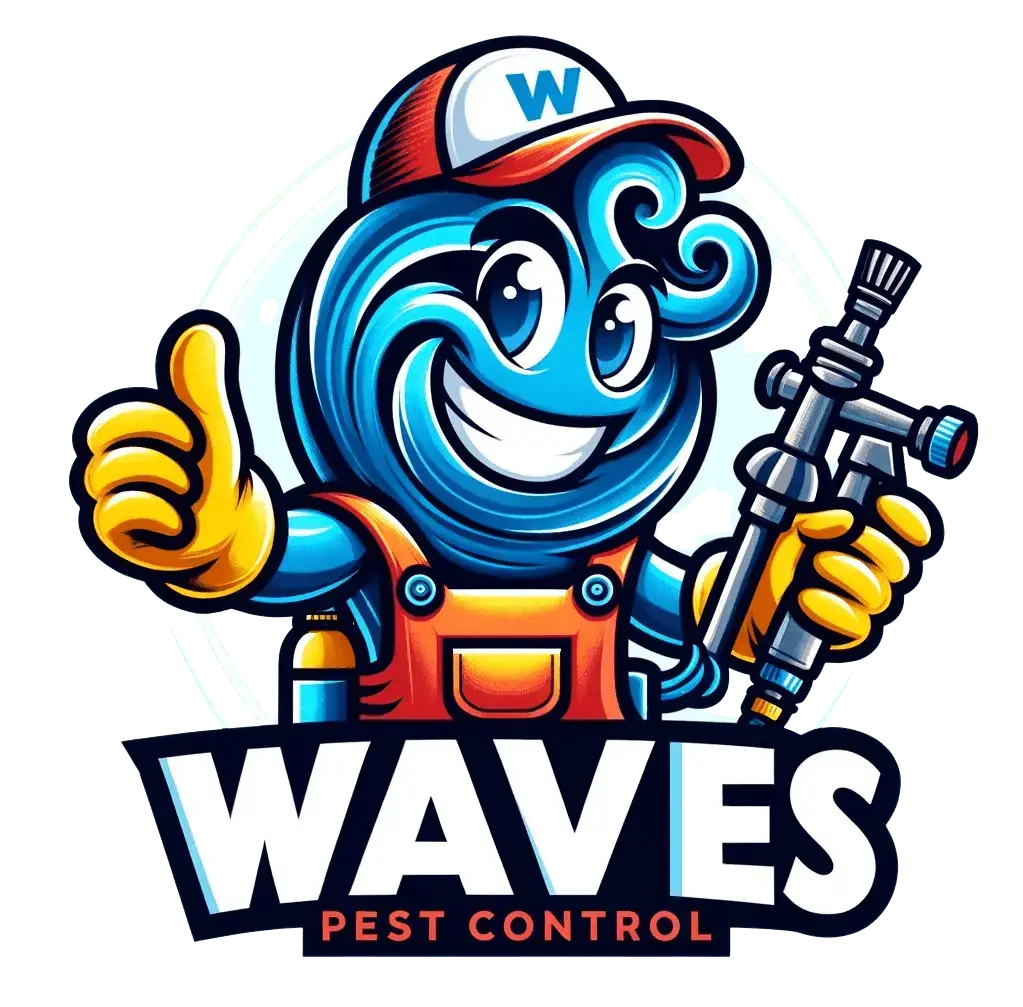
Get Pest-Free Today!
Trust Waves Pest Control for expert pest control in Bradenton, FL. Call now or request your free quote online!
Request a QuoteThe Top 4 Pest Repellent Colors for Bradenton Homes
Blue: The Wasp and Bee Deterrent
What makes blue effective as a pest repellent color: Blue appears less attractive to bees and wasps because it’s poorly visible in the UV spectrum that these insects use for navigation. To them, blue surfaces essentially blend into the background.
Best applications in Bradenton:
- Porch ceilings: The classic “haint blue” ceiling isn’t just Southern tradition – it actually helps deter wasps from building nests under your porch
- Outdoor furniture: Blue outdoor furniture may be less attractive to stinging insects during outdoor gatherings
- Trim and accents: Blue trim around outdoor areas can help create less attractive zones for flying insects
Bradenton-specific benefits: Since we deal with significant wasp activity year-round, blue pest repellent colors can be particularly valuable for outdoor living spaces where wasp encounters are both common and problematic.
Limitations to consider: While blue deters bees and wasps, it may not be as effective against other flying insects like moths or beetles. It’s also worth noting that very bright blues might still attract some insects if they’re highly reflective.
Green: The All-Purpose Insect Deterrent
What makes green effective as a pest repellent color: Insects have difficulty registering green hues on the UV spectrum, making green surfaces less visible and therefore less attractive to a wide variety of pest species.
Best applications in Bradenton:
- Exterior walls: Green siding or paint can help reduce overall insect attraction to your home’s exterior
- Outdoor structures: Green sheds, fences, and garden structures may experience less insect activity
- Window trim and shutters: Green accents around windows can help reduce insects gathering near entry points
Bradenton-specific benefits: Green pest repellent colors work well in our lush, tropical environment because they blend naturally with vegetation while providing broad-spectrum insect deterrence.
Shade considerations: Darker, muted greens tend to be more effective pest repellent colors than bright or neon greens, which might still attract certain insects.
Yellow: The Fly and Mosquito Repellent (With Caveats)
What makes yellow effective as a pest repellent color: Yellow’s warm tone appears to repel flies and mosquitoes, possibly because it doesn’t fit their natural attraction patterns for dark colors (mosquitoes) or food sources (flies).
Best applications in Bradenton:
- Exterior accents: Yellow trim or decorative elements in areas where fly and mosquito control is priorities
- Outdoor dining areas: Yellow elements near patios or outdoor kitchens may help reduce fly activity
- Garden structures: Yellow garden sheds or decorative elements can help in areas where mosquito control is important
Bradenton-specific benefits: Given our year-round mosquito and fly pressure, yellow pest repellent colors can be particularly valuable in outdoor entertaining areas.
Important limitations: Yellow can attract bees, wasps, and other insects that associate it with flowers. This creates a trade-off where yellow pest repellent colors help with some insects while potentially attracting others.
Orange: The Warm-Tone Pest Deterrent
What makes orange effective as a pest repellent color: Like yellow, orange’s warm tone appears to repel mosquitoes and flies while being less attractive to insects that prefer darker colors for landing and breeding sites.
Best applications in Bradenton:
- Outdoor furniture cushions: Orange fabrics may be less attractive to mosquitoes during evening outdoor activities
- Decorative elements: Orange planters, umbrellas, or accents in mosquito-prone areas
- Pool and patio areas: Orange elements around water features where mosquito control is particularly important
Bradenton-specific benefits: Orange pest repellent colors can be particularly effective in our humid environment where mosquitoes are active year-round and outdoor activities are frequent.
Considerations for use: Like yellow, orange may attract some insects while repelling others, requiring strategic placement and combination with other pest control services in Bradenton.
Strategic Application of Pest Repellent Colors in Bradenton
Outdoor Living Spaces
Porch and patio design:
- Use blue on ceilings to deter wasps and reduce nest-building
- Choose green for furniture or structural elements to provide broad insect deterrence
- Consider yellow or orange accents in areas where mosquito and fly control is priority
Pool and outdoor dining areas:
- Orange or yellow umbrellas and cushions may help with mosquito control
- Green privacy screens can reduce overall insect attraction
- Blue accents around seating areas may discourage stinging insects
Garden and landscape integration:
- Green structures blend naturally while providing pest repellent benefits
- Strategic use of warm tones near outdoor entertaining areas
- Blue accents on arbors or pergolas to discourage wasp nesting
Home Exterior Applications
Trim and accent colors: Using pest repellent colors for trim allows you to gain benefits without committing to full exterior color changes.
Window and door treatments: Green or blue trim around entry points may help reduce insects gathering near access points to your home.
Architectural features: Porches, overhangs, and other architectural elements painted in pest repellent colors can create insect-deterrent zones around your home.
Combining Pest Repellent Colors with Other Strategies
Lighting Considerations
Color and lighting interaction:
- Warm, dim lighting complements pest repellent colors by reducing overall insect attraction
- Avoid bright white lights near pest repellent colored surfaces to prevent overwhelming the color effect
- Consider yellow bug lights in areas where you’re using blue or green pest repellent colors
Strategic lighting placement: Position lights away from seating areas and toward the periphery of outdoor spaces to draw insects away from areas where pest repellent colors are being used.
Landscaping Coordination
- Plant selection: Choose plants that naturally repel insects to complement your pest repellent color strategy around your Bradenton home.
- Maintenance factors: Keep vegetation trimmed away from pest repellent colored surfaces to prevent creating insect harboring areas that defeat the color benefits.
Professional Pest Control Integration
- Pest repellent colors as support, not replacement: Use color choices to reduce pest pressure while maintaining regular professional pest control for comprehensive management.
- Monitoring effectiveness: Track whether pest repellent colors seem to make a difference in specific areas to refine your approach over time.
Realistic Expectations for Pest Repellent Colors
What Pest Repellent Colors Can Do
- Reduce attraction: Certain colors can make surfaces less attractive to specific pest types, potentially reducing the number of insects in those areas.
- Support other methods: Pest repellent colors work best when combined with proper sanitation, exclusion, and professional pest control in Bradenton.
- Improve outdoor comfort: Even modest reductions in pest activity can make outdoor living spaces more comfortable during Bradenton’s peak pest seasons.
What Pest Repellent Colors Cannot Do
- Eliminate pest problems: Color alone won’t solve serious pest infestations or eliminate all pest activity around your home.
- Work universally: Different insects respond differently to colors, so pest repellent colors that work for one pest type might not affect others.
- Replace comprehensive pest management: Professional pest control, proper sanitation, and structural modifications remain essential for effective pest management.
Local Bradenton Considerations
Climate Factors
- UV intensity: Bradenton’s intense sun can affect how pest repellent colors appear to insects and may cause faster fading of paint finishes.
- Humidity effects: High humidity can affect paint longevity and may influence how pest repellent colors reflect light.
- Storm considerations: Hurricane season damage may require repainting, providing opportunities to incorporate pest repellent colors during repairs.
Common Pest Pressures
- Mosquito management: Year-round mosquito activity makes warm-toned pest repellent colors particularly valuable for outdoor areas.
- Stinging insect control: Active wasp and bee populations make blue pest repellent colors especially useful for porch and patio areas.
- Flying insect diversity: Bradenton’s diverse flying insect population benefits from the broad-spectrum approach of green pest repellent colors.
HOA and Aesthetic Considerations
- Color restrictions: Check HOA guidelines before implementing pest repellent colors to ensure compliance with community standards.
- Architectural compatibility: Choose pest repellent colors that complement your home’s architectural style and neighborhood aesthetic.
- Resale considerations: Select pest repellent colors that provide practical benefits while maintaining broad appeal for future buyers.
Practical Implementation Tips
Starting Small
- Test areas: Try pest repellent colors on smaller areas like trim or outdoor furniture before committing to larger surfaces.
- Seasonal testing: Implement pest repellent colors before peak pest seasons to evaluate effectiveness during high-activity periods.
- Combination approaches: Use multiple pest repellent colors strategically rather than relying on single-color solutions.
Maintenance Considerations
- Paint quality: Use high-quality, UV-resistant paints to maintain pest repellent color effectiveness in Bradenton’s intense sun.
- Regular refreshing: Plan for periodic repainting to maintain color intensity and pest repellent properties.
- Cleaning effects: Regular cleaning to remove dirt and debris helps maintain the visual properties that make pest repellent colors effective.
The Bottom Line on Pest Repellent Colors in Bradenton
Pest repellent colors offer a simple, low-cost addition to your overall pest management strategy, but they’re not a magic bullet for Bradenton’s challenging pest environment. The most effective approach combines strategic use of pest repellent colors with proper sanitation, exclusion methods, and effective pest control in Bradenton.
Blue, green, yellow, and orange each offer specific benefits against different pest types, but their effectiveness varies depending on the insect species and environmental factors. For Bradenton homeowners dealing with year-round pest pressure, incorporating these pest repellent colors into outdoor living spaces and exterior elements can provide modest but meaningful improvements in comfort and pest reduction.
The key is having realistic expectations and using pest repellent colors as one component of a comprehensive approach to pest management rather than expecting them to solve all your pest problems independently.
Frequently Asked Questions (FAQs)
Do pest repellent colors really work, or is this just marketing hype?
Research suggests that insects do respond differently to various colors based on their UV spectrum vision, but the effects are modest. Pest repellent colors can provide some benefit when used strategically, but they’re not a replacement for proper pest control methods.
Which pest repellent colors work best for Bradenton’s most common pests?
Blue works well for wasps and bees (great for porch ceilings), green provides broad-spectrum deterrence for various flying insects, and yellow/orange can help with mosquitoes and flies but may attract bees.
Can I just paint my entire house in pest repellent colors?
While you could, it’s more practical and effective to use pest repellent colors strategically on outdoor areas, trim, and accent elements where pest control is most important rather than completely changing your home’s color scheme.
How long do pest repellent colors maintain their effectiveness?
The effectiveness depends on maintaining the color’s intensity and UV-reflective properties. In Bradenton’s intense sun, you may need to refresh paint every 3-5 years to maintain optimal pest repellent benefits.
Will pest repellent colors affect my home’s resale value?
Strategic use of pest repellent colors in outdoor areas and accents shouldn’t negatively impact resale value. However, extreme color choices based solely on pest repellent properties might limit buyer appeal.
Should I avoid certain colors that attract pests?
Bright whites and very light colors can attract many flying insects, especially when combined with bright lighting. Dark colors tend to attract mosquitoes. Consider these factors when choosing exterior colors and lighting.
Can I use pest repellent colors indoors?
While the research focuses on outdoor applications, some pest repellent colors might provide modest benefits near windows, doors, or other areas where flying insects are problems indoors.
How do I know if pest repellent colors are working in my specific situation?
Monitor pest activity in areas where you’ve used pest repellent colors compared to areas where you haven’t. Keep in mind that many factors affect pest activity, so benefits may be subtle and gradual.

